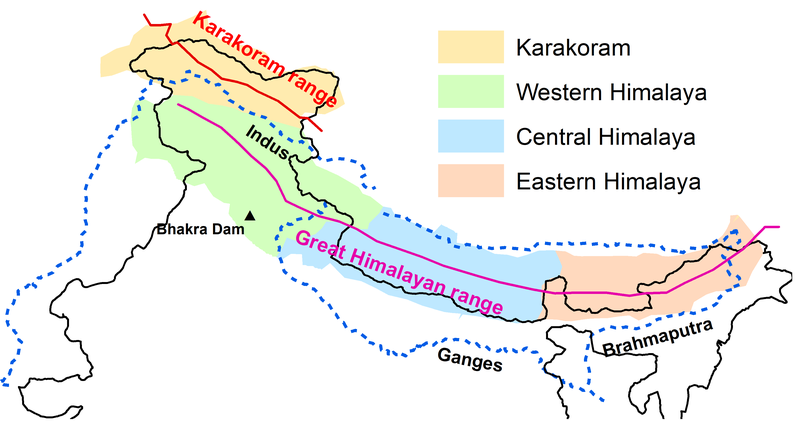Map Himalayas Mountain Range

Hey there, folks! I wanted to share some concerning news about the Himalayan glaciers with all of you. Apparently, they are wasting away at an alarming rate, which is posing a serious threat to mountain communities. I know this might not seem like something that directly affects us farmers, but ultimately, it will impact our livelihoods in one way or another.
According to a recent report, the Himalayan glaciers are melting twice as fast as they were even just a few decades ago. This is due to a combination of factors, including rising global temperatures and changing weather patterns. As the glaciers continue to shrink, they will have less and less water stored in them, which could ultimately lead to water shortages for communities downstream.
I know we often think of glaciers as being far away and not really relevant to our day-to-day lives, but they actually play a crucial role in providing water for millions of people. In fact, the Himalayan glaciers are sometimes referred to as the "water towers of Asia" because of the significant water resources they hold.
So why should we farmers care about all of this? Well, for starters, if water shortages become more common in the regions surrounding the Himalayas, it could impact our ability to grow crops and feed our families. Additionally, many farmers in Nepal and other parts of Asia rely on the lakes and rivers fed by the Himalayan glaciers to water their crops and livestock. If those water sources dry up, it could have disastrous consequences for our communities.
Of course, the situation with the Himalayan glaciers is incredibly complex and there are no easy answers. However, there are a few things that we as farmers can do to help mitigate the effects of climate change and protect our water resources.
For starters, we can try to reduce our carbon footprint by being more mindful of our energy consumption. This could mean using more energy-efficient appliances, driving less, or even switching to renewable sources of energy like solar or wind power.
We can also be more conscious of our water usage and try to conserve it wherever possible. This might mean taking shorter showers, fixing leaky faucets, or using drip irrigation systems in our fields.
Finally, we can advocate for policies and initiatives that prioritize environmental protection and sustainability. This could mean supporting politicians who champion green policies, or getting involved with local organizations that work to promote sustainable agriculture and land management practices.
I know that it can sometimes feel overwhelming to think about all of the ways that climate change is impacting our world, but I truly believe that we as farmers have an important role to play in helping to address these issues. By working together and being mindful of our impact on the environment, we can help to ensure a stable and healthy future for ourselves, our crops, and our communities.
Thanks for taking the time to read this, and I hope that some of these ideas have inspired you to take action in your own lives.



Post a Comment for "Map Himalayas Mountain Range"